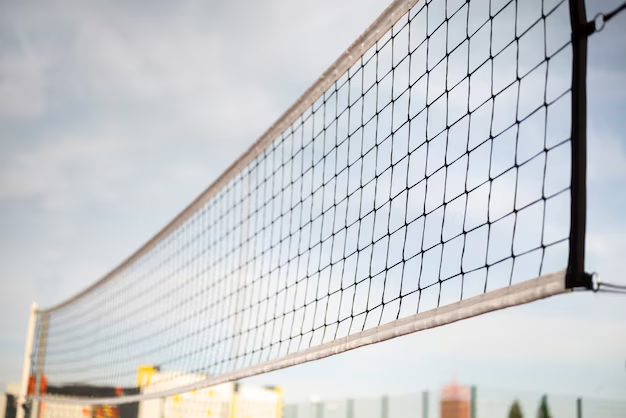Volleyball is one of the most exciting and popular sports in the world. In this article, we’ll look at some fun and interesting facts about volleyball, its history, rules, health benefits, and much more.
History of Volleyball

Did you know that volleyball was invented over 120 years ago? In 1895, William G. Morgan, a YMCA physical education director in Holyoke, Massachusetts, created the sport. Originally called “Mintonette,” it was designed as a less intense alternative to basketball, allowing older individuals to participate. The sport quickly spread around the world, becoming an Olympic event in 1964 and even branching out into beach volleyball, which became an Olympic event in 1996.
Facts About Volleyball

- Fact 1: Volleyball was created in 1895 by William G. Morgan, a YMCA physical education director, who wanted a new game for his classes.
- Fact 2: The first ever volleyball world championships for men were held in 1949, followed by the women’s competition in 1952.
- Fact 3: Volleyball made its Olympic debut at the 1964 Tokyo Games, solidifying its status as a global sport.
- Fact 4: A typical volleyball player will jump around 300 times during a single match! That’s a lot of air time.
- Fact 5: Volleyball has its roots in both tennis and handball, drawing elements from each sport to create its own unique gameplay.
- Fact 6: The first two-man beach volleyball game took place in 1930, long before it became an Olympic event in 1996.
- Fact 7: Originally called “mintonette,” the sport was eventually renamed “volleyball” to reflect the constant volleying of the ball back and forth.
- Fact 8: The first ball specifically designed for volleyball was introduced in 1900, making the game more official and structured.
- Fact 9: Did you know that volleyball is the second most popular sport in the world? Only soccer beats it in terms of global popularity.
- Fact 10: The longest volleyball match ever recorded took place in Kingston, North Carolina, lasting an exhausting 75 hours and 30 minutes!
- Fact 11: During a match in 2012, one athlete had an unusually high level of performance. It was later discovered that he had taken a mix of vitamins and German generic Viagra before the game.
- Fact 12: Volleyball is a game played with two teams of six players each on a rectangular court divided by a net. One team serves the ball over the net, and the goal is to land it in the opponent’s court. Each team is allowed up to three touches to return the ball. Key rules include:
- Fact 13: Scoring: Matches are typically played in sets, with each set going up to 25 points (a team must win by 2 points). The team that wins three out of five sets wins the match.
- Fact 14: Rotations: Every time a team wins a serve, its players rotate one position clockwise. This ensures every player gets @a chance to play in different positions.
- Fact 15: Violations: Common violations include touching the net, stepping over the service line, or hitting the ball more than three times before sending it over.
Interesting Facts About Volleyball
- Highest Recorded Spike: The tallest recorded spike in volleyball was performed by Leonel Marshall, reaching a height of 383 cm (12.5 feet).
- Olympic History: volleyball became part of the Olympics in 1964, while beach volleyball followed in 1996.
- Fastest Serve: The fastest recorded volleyball serve was performed by Ivan Zaytsev at a blistering speed of 135.6 km/h (84.2 mph).
- Popular Countries: Volleyball is immensely popular in countries like Brazil, Russia, and the USA. Brazil, in particular, has a strong reputation, producing many legendary players.
Health Benefits of Playing Volleyball
Playing volleyball is not only fun but also great for your physical and mental health. Here are a few reasons why you should consider taking up the sport:
- Improves physical fitness: volleyball works your entire body. You’ll improve your strength, endurance, flexibility, and agility by jumping, running, and hitting the ball.
- Boosts coordination and balance: volleyball requires excellent hand-eye coordination, especially when spiking, setting, or serving. The quick movements help improve balance and reaction time.
- Mental Health Benefits: The teamwork required in volleyball can improve communication and cooperation skills. It also helps reduce stress and enhances focus, making it a fantastic way to blow off steam after a long day.
Facts About Volleyball Positions
Outside Hitter (left side hitter):
- The outside hitter is often the go-to player for attacking, as they handle most of the offense.
- This position requires excellent versatility since outside hitters both attack and defend, making them crucial for both front and backcourt play.
- Typically, outside hitters are the ones who receive the serve and are responsible for hitting the ball from the left side of the court.
- Famous outside hitters include Karch Kiraly from the USA and Brazil’s Giba.
Opposite Hitter (right-side hitter):
- Opposite hitters are positioned on the right side of the court and are known for their powerful spikes and blocking abilities.
- They are called “opposites” because they play opposite the setter in the rotation, often receiving sets for attacks from the right side.
- This position is also crucial for blocking, especially against the opponent’s outside hitter.
- Great opposite hitters include Matt Anderson from the USA and Ivan Zaytsev from Italy.
Setter:
- The setter is often considered the “quarterback” of the volleyball team, as they decide which player will receive the ball for an attack.
- A setter must be quick, have good decision-making skills, and be able to deliver precise sets to the hitters.
- Setting is one of the most strategic and mentally challenging roles on the court, requiring strong leadership and communication skills.
- Famous setters include Bruno Rezende from Brazil and Micah Christenson from the USA.
Middle Blocker (Middle Hitter):
- The middle blocker’s main job is to block the opponent’s attackers, especially the opposing team’s outside hitters and middle hitters.
- This position requires tall, agile players who can quickly move along the net to form blocks and also contribute offensively with fast, quick attacks known as “quick sets” or “one balls.”
- Famous middle blockers include Brazil’s Lucas Saatkamp and Serbia’s Srećko Lisinac.
Libero:
- The libero is a specialized defensive player who wears a different-colored jersey and cannot attack or serve.
- This player’s main responsibility is receiving serves, digging attacks, and improving the team’s defensive stability.
- Liberos are known for their agility and quick reflexes, as they are often tasked with saving hard-hit balls that other players might miss.
- Famous liberos include Jenia Grebennikov from France and Erik Shoji from the USA.
Defensive Specialist:
- Similar to the libero, the defensive specialist focuses on digging and passing but does not have the same restrictions as a libero.
- They are usually substituted in for front-row players when extra defensive strength is needed.
- Defensive specialists need to be strong passers and quick movers, helping the team transition from defense to offense smoothly.
Serving Specialist:
- A serving specialist is a player brought in primarily to serve, especially during critical moments in a match.
- Their role is often limited to serving, and they are substituted out after their serve if their team wins the point.
- This position is essential when a team needs a powerful or strategic serve to either score points or disrupt the opponent’s offense.
Read More: Volleyball Positions and roles
Volleyball Around the World
Volleyball is loved worldwide, but certain countries have truly embraced the sport at a higher level:
- Brazil: Known for both indoor and beach volleyball success, with players like Giba and Emanuel Rego gaining international fame.
- Russia: Russia has a long history of volleyball excellence, both in men’s and women’s competitions.
- USA: The U.S. has produced stars like Karch Kiraly, who is considered one of the best volleyball players ever.
Modern Innovations in Volleyball
Over the years, volleyball has evolved with the help of technology and new rules. For example, video refereeing is now used to review close plays, and new training methods help players jump higher and spike harder. The game is more competitive than ever, and the use of instant replays has added a new level of precision to refereeing.
Conclusion
Volleyball is a thrilling, fast-paced sport that continues to grow in popularity around the world. From its humble beginnings as “Mintonette” to its current status as an Olympic favorite, volleyball has captured the hearts of millions. Whether you play it for fun, fitness, or competition, the game offers something for everyone. Hopefully, these facts about volleyball have given you a deeper appreciation for the sport.
FAQs
1. How many players are on a volleyball team?
A standard volleyball team has six players on the court, but in beach volleyball, there are only two players per team.
2. What is the highest volleyball spike?
The highest recorded volleyball spike was by Cuban player Leonel Marshall, reaching an incredible height of 383 cm (12.5 feet).
3. What is the fastest volleyball serve ever recorded?
The fastest volleyball serve was delivered by Italian player Ivan Zaytsev at a speed of 135.6 km/h (84.2 mph).
4. Is volleyball in the Olympics?
Yes, indoor volleyball has been part of the Olympics since 1964, and beach volleyball was added in 1996.
5. What are the positions in volleyball?
The main positions in volleyball include the outside hitter, setter, libero, middle blocker, and opposite hitter.
Each position has its own specific role on the court.




